Ambitious: “Zenith” at Washington Galleries
Suzanne Szucs reviews Jason Huntzinger's photo show "Zenith" at the Washington Galleries in Duluth through October 30. Gallery hours Saturday and Sunday, 1-5; Antenna Party October 29, 7 pm.
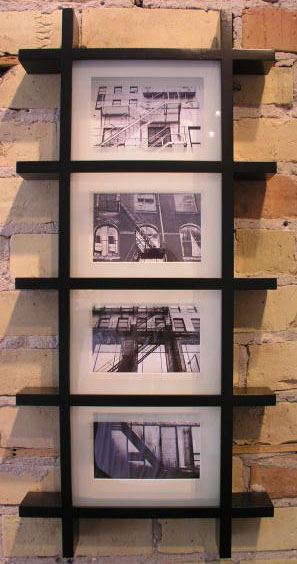
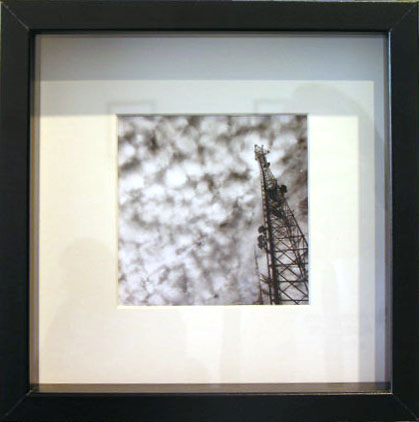
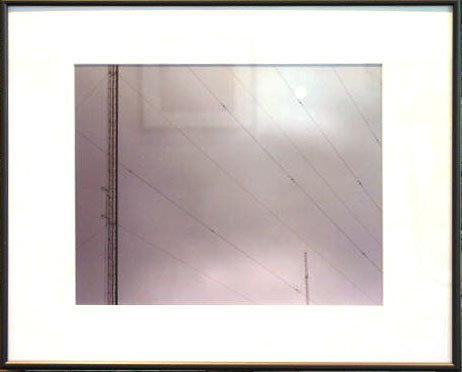
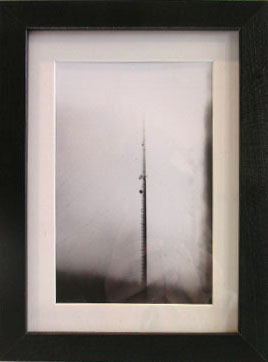
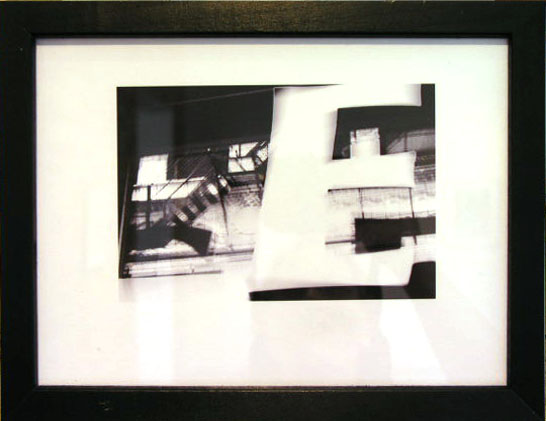
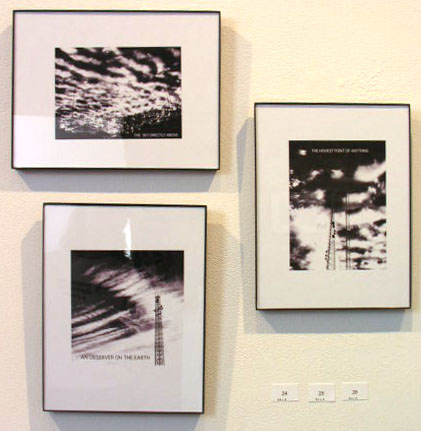
There is a school of photography coming out of University of Minnesota Duluth that emphasizes, “if it’s messy, it must be art.” Don’t blame me: although I taught at UMD, during my years there, at the very least, I taught my students how to make a good print. Precision alone doesn’t make work Art, but at least it provides a foundation from which to expound upon. Jason Huntzinger passed through the program before my time there and I wish I had gotten ahold of him. The limited contact I did have with him has shown me that he is hungry for knowledge and when he showed up in my digital imaging class at the Duluth Art Institute last spring, I knew he meant business.
Never before having used digital technology for a project, Huntzinger was preparing for a show at Washington Galleries in October. My experience told me his ambition was a little beyond what he would be able to achieve, but I admired his desire to forge ahead with something new. So I was ready for what might be the limitations of his new work, Zenith, when I stepped into the exhibition. What I found was, indeed, a mixed bag of imagery, at times showing sparks of Huntzinger’s raw talent, and at others looking hurried and rushed. Zenith is not a tight show, but there is room for growth there and Huntzinger has promised to flesh it out for an exhibition closing party on October 29.
With Zenith, Huntzinger’s love affair with Duluth continues. Known for atmospheric cityscapes, Huntzinger has become obsessed with the communications towers on the top of Observation Hill. His spare photographs of them against cloudy skies take up one room of the exhibition. He repeats a variation of the image – a tower thrusting up into the sky – over and over. Although I believe some of these may be digital images (he doesn’t specify in the titles), he can’t seem to break himself of the formality of traditional photography, except in a small series where he has inserted text into the image. I am, myself, a minimalist at heart, so I really respond to the single towers – like a syringe stabbing pale flesh – however, the prints are too soft, some descending into a purple cast that pales beside the rich blacks of his superb darkroom work presented in the other room.
Huntzinger is clearly at home in the darkroom and he has transcended the Messy equals Art equation to formulate a stylistic vision of his own. These smaller prints of silhouetted buildings against rich dramatic skies are full of foreboding. Perhaps the most successful of this series, which blends the strengths of both rooms, is a small group named “Fog and Light Sequence.” Huntzinger has experimented with pinhole photography, and here he uses that effect to create an eerie group of images that read like hidden messages or photographic evidence. The towers themselves are transmitters and the photographs record that transformative energy.
Huntzinger feels his way in the darkroom, often but not always hitting his mark. His skill set has its limitations, although his desire to build upon it is obvious. However it is his apparent lack of historical training in his field that hampers his progress. His Escape Ladder and Ladder Reflection work as compositions because they follow the structure of Modernist innovators, but he seems unaware of this lineage and the images don’t push any boundaries. Huntzinger shares the same delight for the visual world and the magic of how lines cross shapes that the great Soviet photographer Alexander Rodchenko explored, and Huntzinger is willing to take risks, but he seems dead serious in his work, where Rodchenko experimented playfully, freeing himself from the limitations of the accepted compositional world. The Institute of Design photographers peaking during the 1960’s and 70’s were the natural descendants of Rodchenko’s real-world abstraction, breaking the visual world up into sequences and putting it back together in thrilling compositions. Those photographers (Barbara Crane, Ray Metzker, Joe Jachna, Ken Josephson…) met intuition with intellect, pushing the boundaries of the form. Huntzinger needs to apply some of his hunger for craft into studying these image-makers to really discover the potential of his own vision.
At his best, Huntzinger is spooky. He makes you wonder what presence occupied the locations where he photographs, turning Duluth into a supernatural town. Despite the sparsity of the best images and his theme, he seems compelled to fill the space beyond necessity by putting up photocopies of the same tower image – filling in the gaps between photographs. This loosens up an already spotty exhibition. It can be intimidating to have a space all to one’s self and feel compelled to fill it – he may not have been quite ready to have this solo show. However, it will definitely nourish the next one; the seeds are there.
Huntzinger will be updating the exhibition before having a closing event on October 29 with musical guests to be announced. For information contact 727-1218. Jason says, “There will also be a contest to see who has the best antenna farm-themed costume; it should be fun.” So check it out.